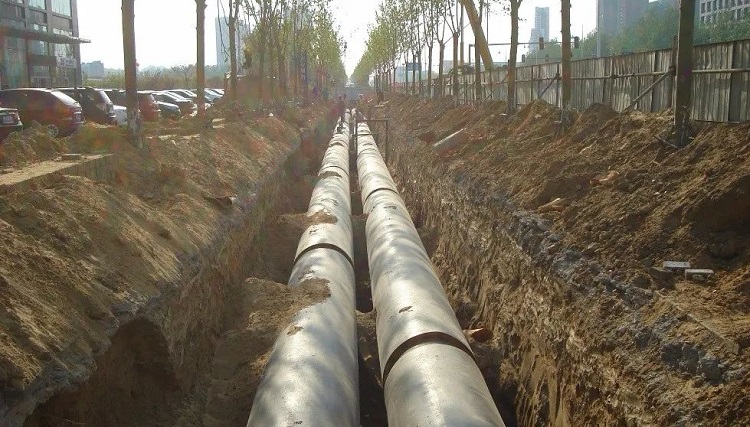

SEARCH
Introduction: Heat pipe network is the infrastructure to ensure the quality of life, and it is also a complex system. What does the heat network involve? What are the key requirements for technology? This article gives you the answer.

1. What is the heat pipe network? What does it include?
From ensuring people's basic life to technological iteration, the value of the thermal pipe network is not only reflected in the practicability of heating, but also in the sustainable development significance of improving energy utilization efficiency.
The reason why we say that the heat supply network is a complex system is because it includes a variety of equipment, constituting a complete heating network. Such as:
Main line - Connect the heat source and the user to achieve heat transmission;
The import and export pipeline of the thermal station connects the thermal station and the main line to achieve intermediate heat exchange;
Compensator - reduce the impact of pipe stress caused by temperature changes on the equipment;
Valve - control the pressure and temperature of the medium in the pipeline to ensure the normal operation of the heating system;
Piping and its insulation and corrosion protection system - Piping is the main component, and the insulation and corrosion protection system protects the piping from corrosion and reduces heat loss.
The various parts of the heat network cooperate with each other and work together to achieve the transmission and distribution of heat energy to meet the needs of urban heating and other heat uses.
Among them, "temperature" runs through the entire system of the heat pipe network, which means that the thermal insulation work of the heat pipe network has an important impact on the operation and effectiveness of the heat pipe network.
2. Why does the heat pipe network need insulation?
Reduce energy loss: If the heat pipe network does not take effective insulation measures in the process of transmitting heat energy, it will lead to the loss of heat energy, resulting in energy waste.
Protecting pipe network equipment: the pipes and equipment in the thermal pipe network are vulnerable to damage in high or low temperature environments, and effective insulation can reduce the impact of environmental factors on pipe network equipment and extend the service life of the equipment.
Prevent burns and fire: Insulation can reduce the temperature of the outer surface of the pipe, reduce the risk of burns when personnel contact, and prevent the occurrence of fire.
Meet the needs of users: insulation measures can effectively maintain the heat energy in the pipeline, ensure the stability of the heating temperature and meet the needs of users.
3. What is the difficulty of heat preservation of the heat pipe network? How to solve it?
Material selection and maintenance: The thermal pipe network needs to select suitable insulation materials, such as rubber and plastic, glass wool, aerogel composite products, etc., which need to have excellent insulation properties, heat resistance and stability. At present, we can know that pipeline insulation is undergoing iterative updates of new technologies and new materials. In "Sinopec also entered the aerogel, in the petrochemical pipeline market scale is expected to break 10 billion?" In this paper, aerogel felt has gradually replaced traditional insulation materials into the field of high-temperature pipeline insulation.
Pipeline surface treatment: The surface of the pipeline in the thermal pipe network may have corrosion, oil pollution and other problems, which need to be treated to ensure that the insulation material is pasted and fixed. Pipe surface treatment needs to strictly control rust removal, oil removal and other links to ensure that the surface is clean, dry and smooth, and provide a good foundation for the construction of thermal insulation layer.
Special-shaped pipe and elbow treatment: there are a large number of special-shaped pipes and elbows in the thermal pipe network, and the thermal insulation treatment of these parts is difficult. It is necessary to use special insulation materials and technologies, such as special-shaped tube sleeves, elbow insulation boxes, etc., to ensure the insulation effect. This difficulty also requires that the insulation material has the characteristics of light weight and strong flexibility, which can adapt to various parts of the pipeline, and play the role of tight packaging and accurate insulation.
Waterproof and impermeable: The insulation material in the heat pipe network needs to have a certain waterproof performance to prevent water from infiltrating into the insulation layer, affecting the insulation effect and service life. Therefore, glass wool, aerogel felt and other insulation materials with high-quality hydrophobic properties can effectively prevent thermal displacement, insulation effect decline and other phenomena.
High installation technical requirements: the thermal insulation layer of the heat pipe network needs to be installed on the outer surface of the pipeline and equipment, and appropriate installation technology and fixing method need to be adopted to ensure the fastness and stability of the thermal insulation layer. During the installation process, attention should be paid to details, such as joint treatment, closing fixed, etc., to avoid gaps and voids, affecting the thermal insulation effect.
Related